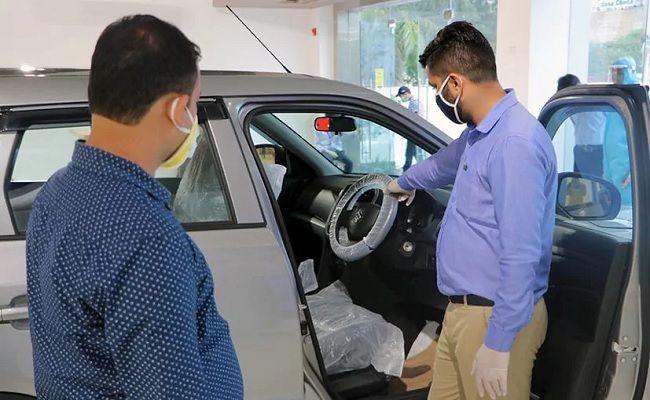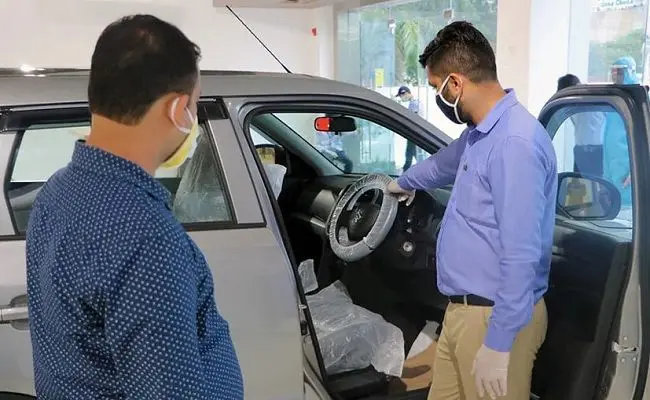Japan Wants Manufacturing Back From China, But Breaking Up Supply Chains Is Hard To Do: Report

Highlights
When Japanese firm Iris Ohyama agreed in April to begin producing much-needed face masks in Japan, it marked a win for Prime Minister Shinzo Abe who wants to bring manufacturing back from China.
Spooked by coronavirus-induced factory shutdowns in China, Abe's government has earmarked $2 billion to help companies shift production home. The policy, part of a massive stimulus package to cope with the pandemic, has even been termed by some bureaucrats as a matter of national security.
"We have become dependent on China," Economy Minister Yasutoshi Nishimura told reporters last week. "We need to make supply chains more robust and diverse, broadening our supply sources and increasing domestic production."
Japanese production of masks, for which domestic demand has skyrocketed, makes sense. But Iris Ohyama, which until this month had only made face masks in China, is so far the only large firm known to be taking advantage of the subsidies.

Japanese politicians have increasingly fretted over Japan's dependence on China as a production hub
Many other Japanese firms say shifting output back home is simply impractical and uneconomical. They need to be physically present in China because much of what they are making is ultimately for the Chinese consumer, and to meet the demands of 'just-in-time' production which prioritises short delivery times for efficient manufacturing.
"The parts we make are so big that we need to be near our customers to control our costs," said Chikara Haruta, a spokesman at Yorozu Corp, which makes suspension and other auto components.
Its plant in Wuhan, China is located just seven kilometres from a Honda Motor Co Ltd assembly factory.
For Japan's car makers, reliance on Chinese suppliers in the world's biggest auto market is also just good business.
"Even if we wanted to, it would be difficult to lower our exposure to China-made parts," an executive at a Japanese automaker told Reuters, declining to be identified as he was not authorised to speak to media.
He added that over the past decade, Chinese suppliers had upped their game and now provide a vast range of quality, low-cost parts.
Toyota Motor Corp, Nissan Motor Co Ltd and Honda also have at least three R&D centres each in China, and their suppliers are following suit.
"Where the software is developed dictates where the hardware is developed and made," said an official at a Japanese parts supplier, speaking on condition of anonymity.
"The new government incentive is misguided if it only focuses on bringing manufacturing back, while overlooking R&D functions."
OVERLY DEPENDENT?
Japanese politicians have increasingly fretted over Japan's dependence on China as a production hub.
Since the early 2000s as Chinese labour costs rose, there has been talk of a "China Plus One" strategy - a policy of managing risk by locating plants and facilities in China and one other Asian nation. It gained more traction in 2012 when bilateral tensions flared and many Japanese firms have sought to diversify with operations in Southeast Asia.
The near total shutdown of China's factories in February as the world's No. 2 economy sought to stamp out the coronavirus has, however, rammed Japan's China dependence home.
The government's 220 billion yen (1.57 billion pounds) allocation is the first time it has offered subsidies for bringing back manufacturing. It is also offering 23.5 billion yen to Japanese firms to strengthen and diversify supply chains in Southeast Asia.
Japanese firms had at least 7,400 affiliates in China as of March 2018, according to a trade ministry survey, up 60% from 2008. In the same year, Japanese manufacturing affiliates in China sold $252 billion in goods, with 73% of that sold in China and 17% exported back home, a separate survey by the ministry shows.
CHOOSING CHINA
Electronics makers too say they would struggle to sever ties with China's supply chains.
Nidec Corp, which produces motors for electronic goods, even said in April it needed to improve its supply chain in China. It was unable to procure supplies of a basic part this year which it had believed was sourced locally but was in fact being shipped from Europe.
"We need to strengthen sourcing capabilities at our Chinese plants. We should be producing these sorts of parts in-house," CEO Shigenobu Nagamori told reporters.
Japan Display Inc and chipmaker Rohm Co Ltd say potential shifts to full automation for labour-intensive back-end processes done overseas could lead to new assembly lines being built at home where more advanced manufacturing takes place.
But for many others, China remains the cheaper option.
Display panel and television maker Sharp Corp produces ultra-thin panel cells in Japan, which are shipped to China where backlights, connectors and other parts are added - a process that requires constant manual testing and machinery adjustments.
"The back-end process has long been done in China because it's labour intensive," said a spokesman at Sharp, which was acquired by Taiwan's Foxconn in 2016.
"It would be expensive to bring it back home."
Last Updated on June 9, 2020
Related News/Reviews
- Home
- News
- Auto Industry
- Japan Wants Manufacturing Back From China, But Breaking Up Supply Chains Is Hard To Do: Report













